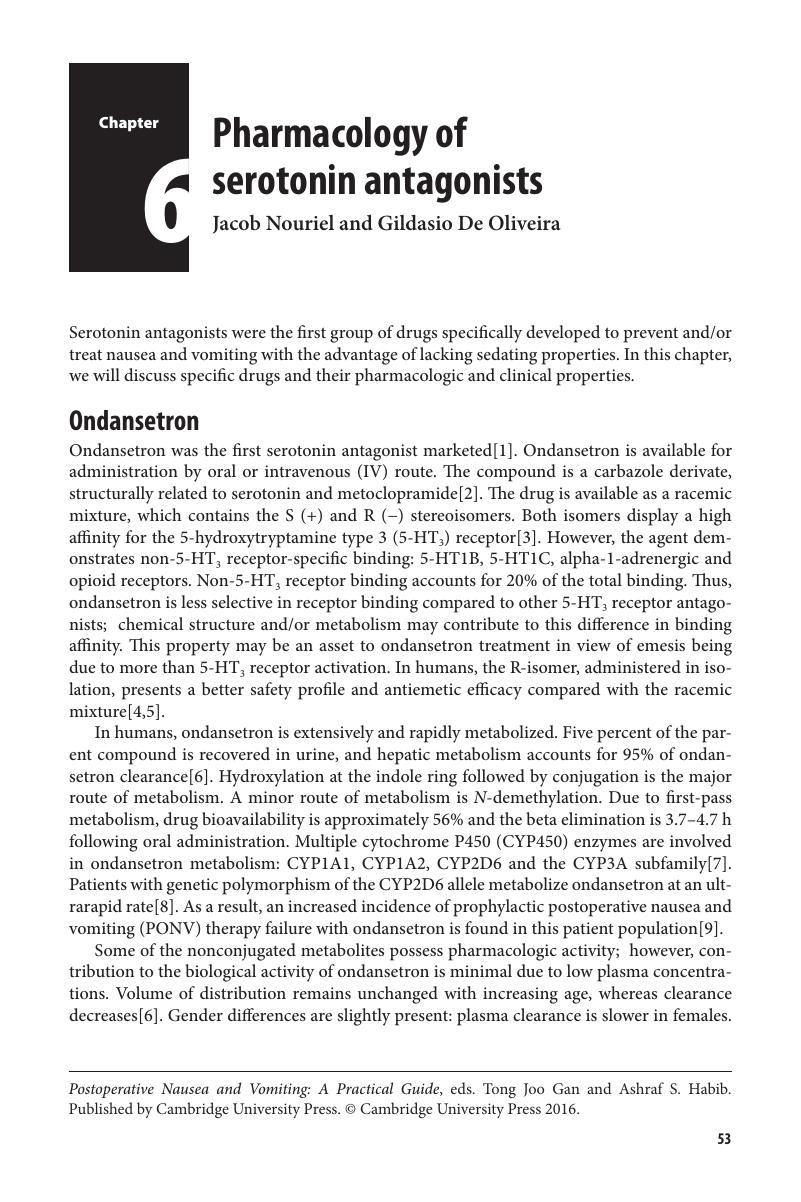Book contents
- Postoperative Nausea and VomitingA Practical Guide
- Postoperative Nausea and Vomiting
- Copyright page
- Dedication
- Contents
- Contributors
- Foreword
- Preface
- Chapter 1 History of postoperative nausea and vomiting
- Chapter 2 Mechanisms of nausea and vomiting
- Chapter 3 Risk factors and their impact on postoperative nausea and vomiting
- Chapter 4 Patients’ experience and nursing perspective
- Chapter 5 Genomics and personalized medicine in postoperative nausea and vomiting management
- Chapter 6 Pharmacology of serotonin antagonists
- Chapter 7 Pharmacology of histamine, muscarine and dopamine antagonists
- Chapter 8 Pharmacology of neurokinin antagonists and novel antiemetics
- Chapter 9 Propofol and other sedatives as antiemetics
- Chapter 10 Nonpharmacologic management of postoperative nausea and vomiting
- Chapter 11 Combination antiemetics
- Chapter 12 Management of postoperative nausea and vomiting in pediatric patients
- Chapter 13 Management of postoperative nausea and vomiting in inpatients and ambulatory patients
- Chapter 14 Postoperative nausea and vomiting management: cost-effectiveness and patient outcome
- Chapter 15 Postoperative nausea and vomiting research: methodology, assessment and strength of evidence
- Chapter 16 Implementing postoperative nausea and vomiting management guidelines
- Index
- References
Chapter 6 - Pharmacology of serotonin antagonists
Published online by Cambridge University Press: 05 March 2016
- Postoperative Nausea and VomitingA Practical Guide
- Postoperative Nausea and Vomiting
- Copyright page
- Dedication
- Contents
- Contributors
- Foreword
- Preface
- Chapter 1 History of postoperative nausea and vomiting
- Chapter 2 Mechanisms of nausea and vomiting
- Chapter 3 Risk factors and their impact on postoperative nausea and vomiting
- Chapter 4 Patients’ experience and nursing perspective
- Chapter 5 Genomics and personalized medicine in postoperative nausea and vomiting management
- Chapter 6 Pharmacology of serotonin antagonists
- Chapter 7 Pharmacology of histamine, muscarine and dopamine antagonists
- Chapter 8 Pharmacology of neurokinin antagonists and novel antiemetics
- Chapter 9 Propofol and other sedatives as antiemetics
- Chapter 10 Nonpharmacologic management of postoperative nausea and vomiting
- Chapter 11 Combination antiemetics
- Chapter 12 Management of postoperative nausea and vomiting in pediatric patients
- Chapter 13 Management of postoperative nausea and vomiting in inpatients and ambulatory patients
- Chapter 14 Postoperative nausea and vomiting management: cost-effectiveness and patient outcome
- Chapter 15 Postoperative nausea and vomiting research: methodology, assessment and strength of evidence
- Chapter 16 Implementing postoperative nausea and vomiting management guidelines
- Index
- References
Summary

- Type
- Chapter
- Information
- Postoperative Nausea and VomitingA Practical Guide, pp. 53 - 61Publisher: Cambridge University PressPrint publication year: 2016



